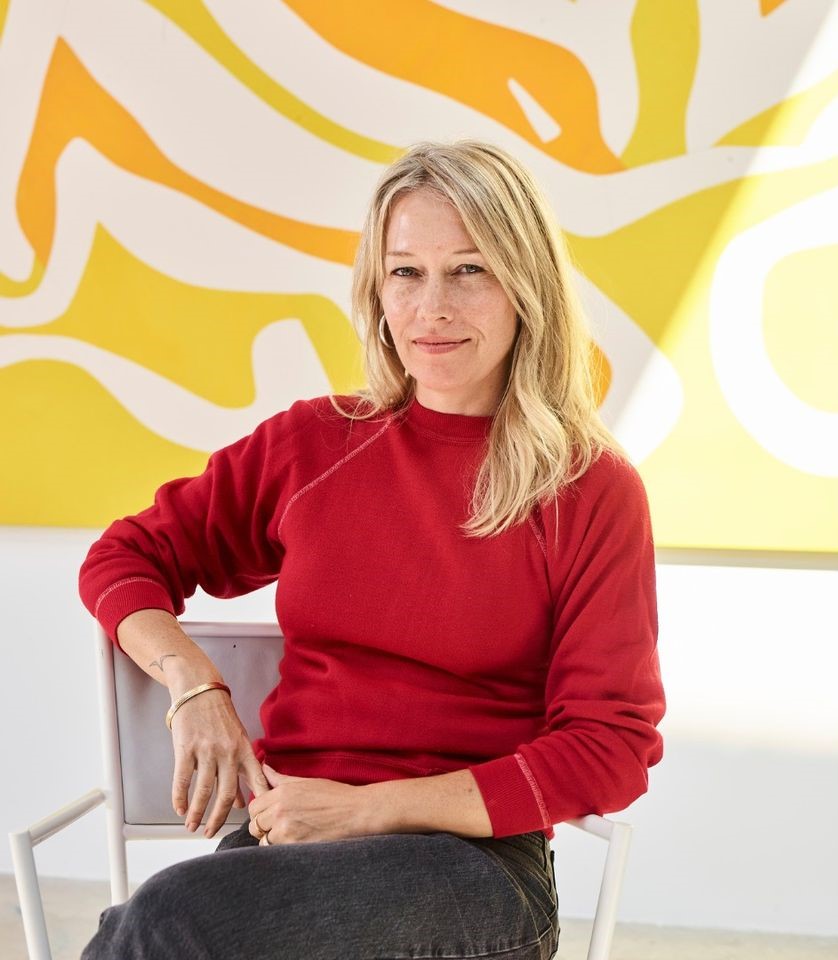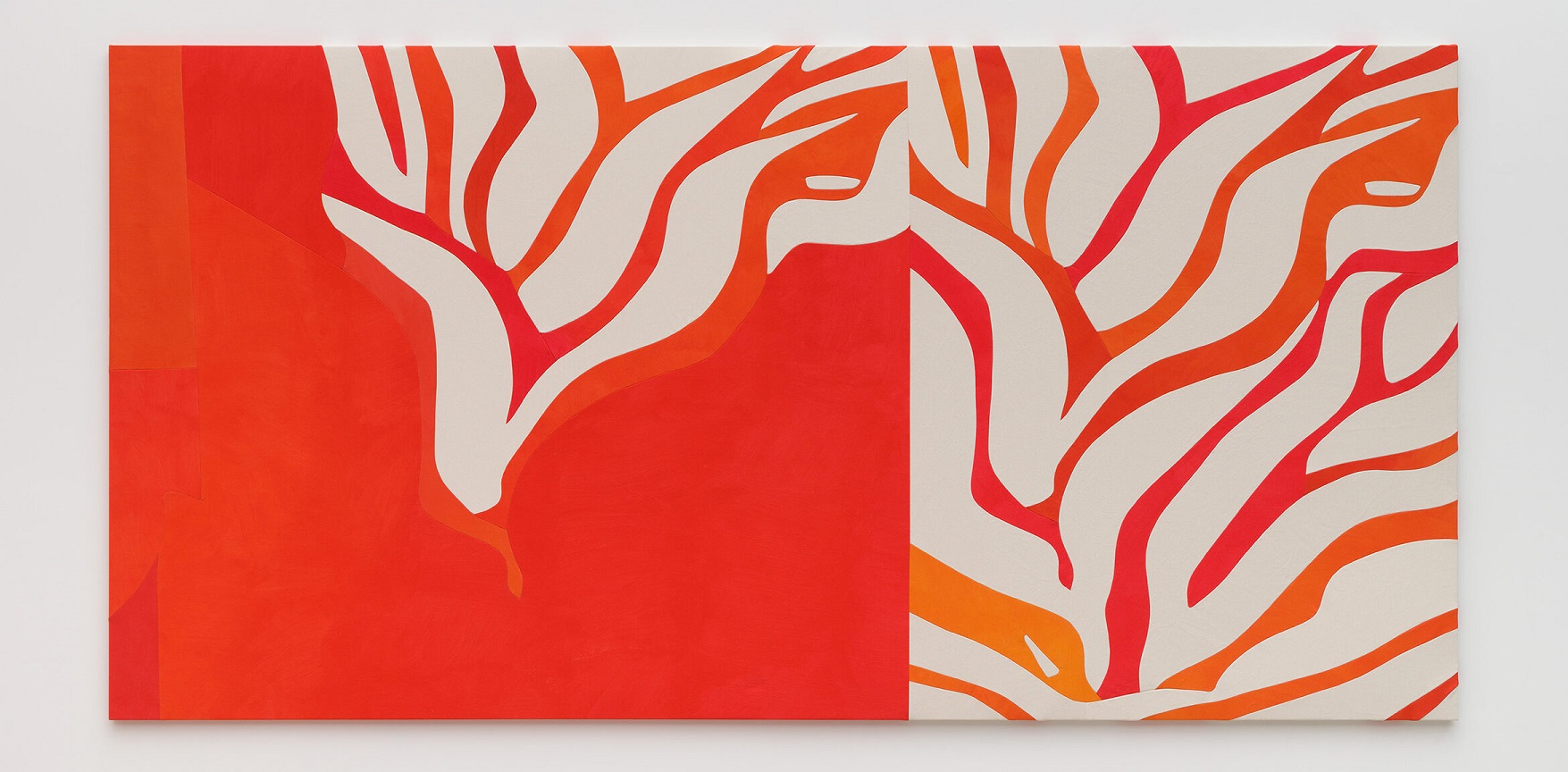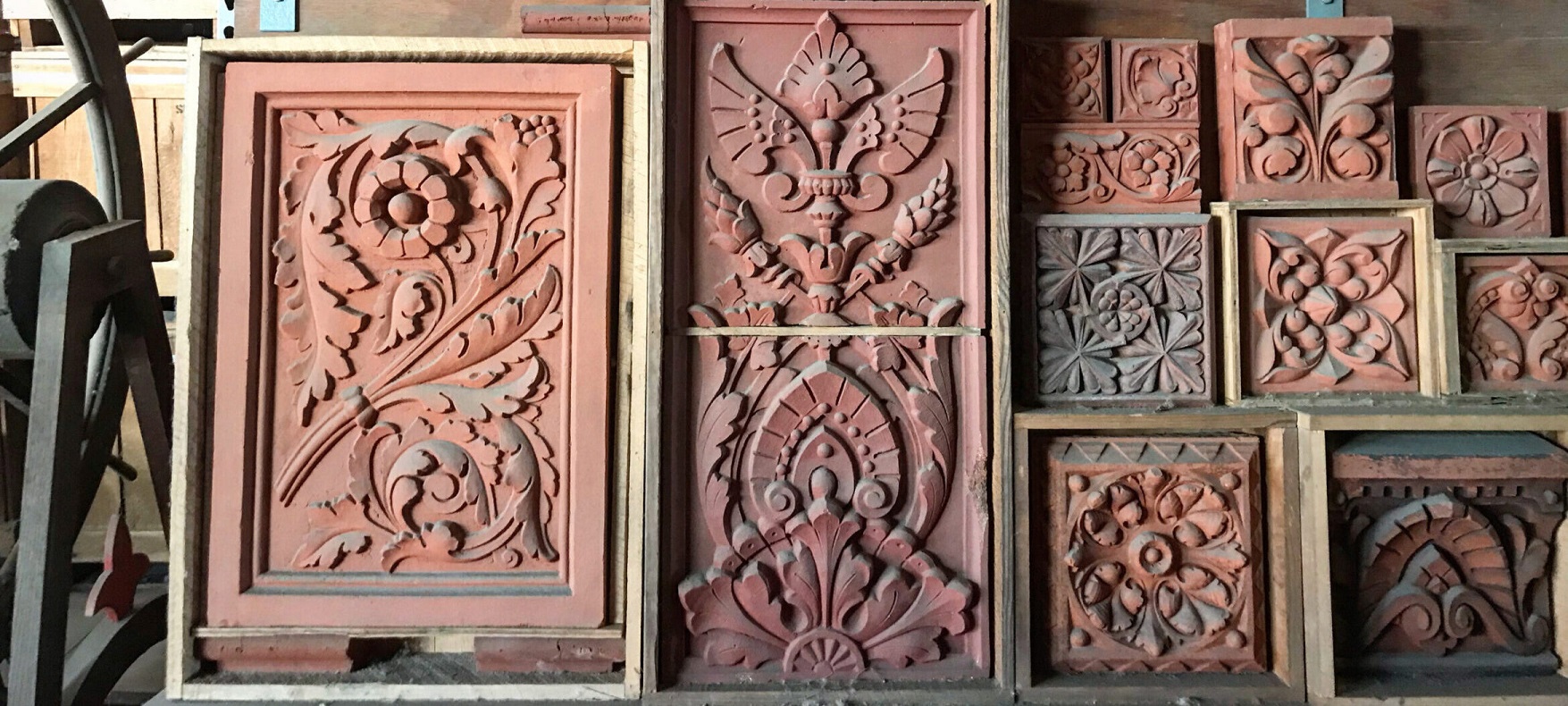The Pulitzer Arts Foundation in Grand Center is launching its fall exhibition season next month with two exhibitions that each pay homage to the architectural identity of St. Louis in different ways.
The 2023 season begins Friday, Sept. 8, with an opening reception at the Pulitzer featuring light refreshments from 6 to 9 p.m.

The first exhibit, “Sarah Crowner: Around Orange,” features three new commissions by the New York-based artist, known for her bold abstraction, intense color and handmade artistry.
Crowner’s three site-specific artworks are a nod to the striking architecture of the Pulitzer’s Tadao Ando building and the vision of Ellsworth Kelly, whose painted aluminum “Blue Black” wall sculpture is among the highlights of the museum’s collection.

For “Around Orange,” curated by the Pulitzer’s Stephanie Weissberg, Crowner created a 75-foot-long painting sewn together from cut sections of canvas for the main gallery, which will be complemented by a glazed terracotta mural of the same height in the museum’s entrance courtyard. In the entrance gallery, the artist assembled an expansive birch wood platform alongside a focused selection of early works by Kelly.
The second exhibit, “Urban Archeology: Lost Buildings of St. Louis, is a groundbreaking collaboration between the Pulitzer and the National Building Arts Center (NBAC).

The center, based in Sauget, Illinois, aims to be the leading museum of the history of building and construction in the country, according to NBAC executive director Michael Allen, who serves as “Urban Archeology” co-curator, along with Weissberg.
“We use the largest collection of architectural and engineering artifacts in the nation and a vast library and archive to explain the ‘how’ and ‘why’ behind buildings both extraordinary and ordinary,” Allen said.

The exhibit brings together salvaged architectural pieces from landmark buildings, residential homes and other properties built in St. Louis between 1840 and 1950, the time period when the bulk of demolitions took place since the NBAC collection began.
“While buildings built since 1950 have come down, demolition in St. Louis peaked in the 1970s when buildings from the late 19th and early 20th century were being wrecked by the thousands each year,” Allen explained.
The artifacts on view represent important histories of material innovation, labor and the everyday lives of the people who inhabit the city.
“One of the most surprising findings is that there are quite a few salvagers out there – it’s not just the NBAC, other museums or architectural antique shops,” Allen said. “People all over the city have recovered objects of memory from wrecking sites in their own neighborhoods. We actually ended up including an artifact from St. Louis Place recovered by artist Robert Green, who has assembled a collection of building materials from his neighborhood that became so large, he purchased another house to exhibit them.”

In addition to documenting St. Louis’ history of material innovation, urban development and demolition practices, the exhibit also examines how these narratives impacted the dynamics of race, class and power, which all continue to shape the city today.
Both exhibits, on view from Sept. 8 to Feb. 4, 2024, are free and open to the public. For more information, visit the Pulitzer Arts Foundation website.
Culture and Community are Front and Center at New 21c Hotel Downtown





